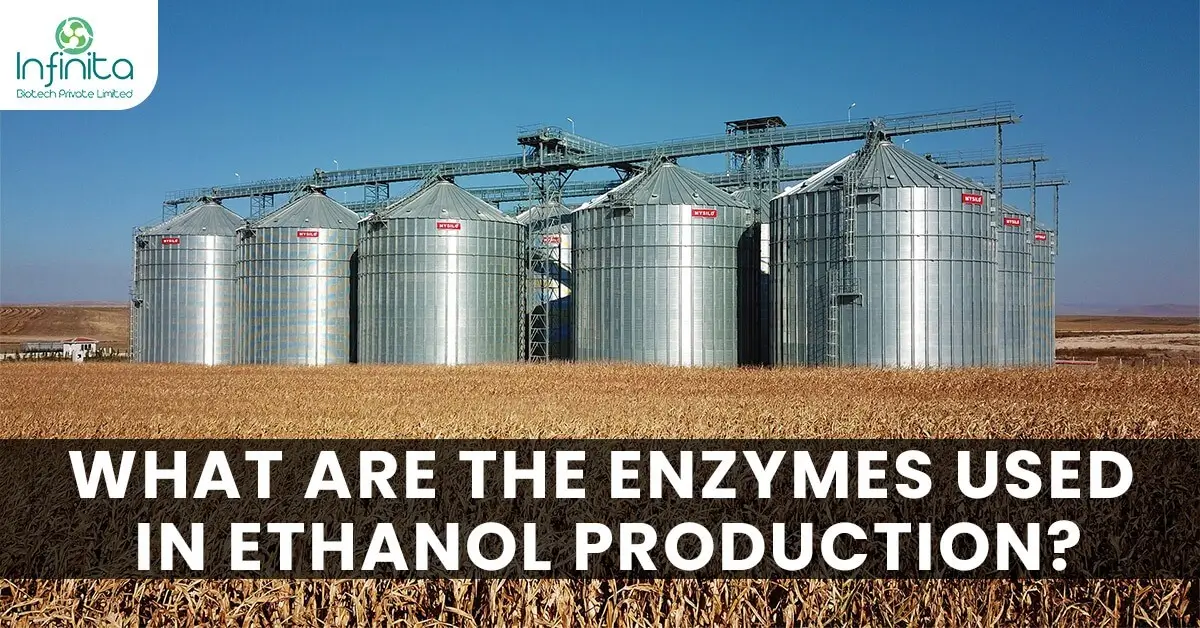Given the predicted exhaustion of Crude-oil-based fuel energy supply, bioethanol has gained importance as an alternate source of energy. Bioethanol is produced via microbial fermentation and offers a cost-effective source of energy. Microbes produce the majority of the ethanol used in today’s critical tasks. Current technology relies on the conversion of enzymes to ethanol by yeast.
In the current context of increasing temperatures and rapidly depleting oil supplies, bioethanol produced by renewable sources protects the environment through reducing global warming, cost-effective growth, and energy preservation.
Second Generation Bioethanol Production By Using Microbial Enzyme
Cellulases are a group of hydrolytic enzymes that work together to convert cellulosic biomass into a microbial process. Some exoglucanase starts their activity close to the end of cellulose chains, releasing cellobiose including the cellulose chains. The use of cellulase to convert cellulose to ethanol is a modern trend in the biofuel industry. Saccharomyces cerevisiae, a yeast, has been used to commercially produce ethanol from sugars generated from C6 carbohydrates.
Because lignocelluloses are a complex structure in which cellulose is enclosed in lignin by hydrogen and covalent bonds, making the cellulose unreachable for reaction with a hydrolysis agent, utilising cellulosic biomass is more difficult than pure cellulose. The overall economization for the manufacture of ethanol lignocelluloses is determined by the conversion into existent fermentable sugars. Numerous companies use large amounts of cellulose waste to produce ethanol, which is a low-cost and long-term resource.
The enzyme cellulase can effectively hydrolyze and then depolymerize cellulose producing fermentable sugars. Bioethanol synthesis from cellulose, lignocellulose and hemicelluloses depends on enzyme hydrolysis and fermentation of monomer molecules into bioethanol.
The chemical equations below summarise the fermentation of sucrose (C12H22O11) into ethanol (C2H5OH). Alcoholic fermentation converts one mole of glucose into two moles of ethanol and two moles of carbon dioxide, producing two moles of ATP in the process.
The Biochemical Process Of Fermentation Of Sucrose
The procedure, reactions, and enzymes involved in the biochemical process of fermentation of sucrose:
C6H12O6 → 2 C2H5OH + 2 CO2
The enzyme invertase cleaves the glycosidic bond between the glucose and fructose monomers during the first stage of alcoholic fermentation.
C12H22O11 + H2O (invertase) → 2 C6H12O6
In a procedure known as glycolysis, every glucose molecule is broken into two pyruvate molecules.
Glycolysis results in the reduction of two molecules of NAD+ to NADH, as illustrated in the reaction equation. Through substrate-level phosphorylation, two ADP molecules are transformed into two ATP and two water units.
Enzymes Used In The Synthesis Of Ethanol
Pretreatment of biomass, hydrolysis of sugar polymers (cellulose, hemicellulose, etc.) to sugar monomers, and fermentation of sugar monomers to ethanol are the three important phases in the production of cellulosic ethanol via biological conversion.
Pretreatment procedures are generally divided into three categories: physical, chemical, and biological pretreatment. This research focuses on biomass pretreatment in preparation for enzymatic hydrolysis and microbial fermentation for the generation of cellulosic ethanol.
The Filter Paper Assay (FPA) is a tried-and-true technique for evaluating total cellulase activity using Filter paper as substrates. The synergistic effect of endoglucanases, exoglucanases, and α-D-glucosidases on cellulose is referred to as TCA (total cellulase activity). However, because of the technique’s non-reproducibility, there are numerous issues with using FPA to assess total cellulase activity. FPA is much less accurate, difficult, and time-consuming, as well as requires significant quantities of chemicals. The lack of β-glucosidase activity in most natural cellulase complexes affects their repeatability and sensitivity.
Carboxymethyl cellulase activity is measured to verify the function of cellulase enzymes in ethanol generation. The procedure is used to decide the quantity of reduced sugar produced. Under the assay conditions, one unit of CMC action is defined as the quantity of enzyme that released one mol equivalency of glucose. After incubation for 24-120 hours, the cellulase activity is measured. Numerous elements can influence enzymatic activity, and it is necessary to reduce costs. Temperature and pH are the most critical considerations in ethanol synthesis. High temperatures, in general, result in increased productivity. However, as the temperature reaches a comfortable level, the enzymes begin to slow down their action. In addition, an enzyme has a preferred pH.
Microbial Fermentation
Because of the inherent complexity of the carbohydrates found in lignocellulosic materials, the hydrolysate contains a large quantity of xylose and arabinose sugars produced from the hemicellulose component of the lignocelluloses. For instance, xylose accounts for about 30% of the overall fermentable sugar in maize stover hydrolysate. To improve the economic feasibility of cellulosic ethanol, the fermented microbes must be able to use the full range of sugars accessible from the hydrolysate. Metabolic engineering for microbes utilised in fuel ethanol generation has made great development in recent years. Bacteria such as Zymomonas mobilis and Escherichia coli, in addition to saccharomyces, have been selected for metabolic engineering to enhance their fermentation capacities and, as a result, cellulosic production of ethanol.
Future Prospects
The manufacture of cellulosic ethanol using cellulosic biomass is a rapidly evolving process. Enzyme hydrolysis by organically accessible strains to transform cellulose into glucose is among the primary difficulties for cellulosic ethanol production. It’s technically difficult to create a single strain for effective cellulosic ethanol production.
While technological advancements and various research alliances efforts continue, an effective combination of advanced models analysis and cost-effective procedures designed to deal with feedstock adaptability and raw material should arise as the preferred option for ensuring optimum second-generation biofuel efficiency.


